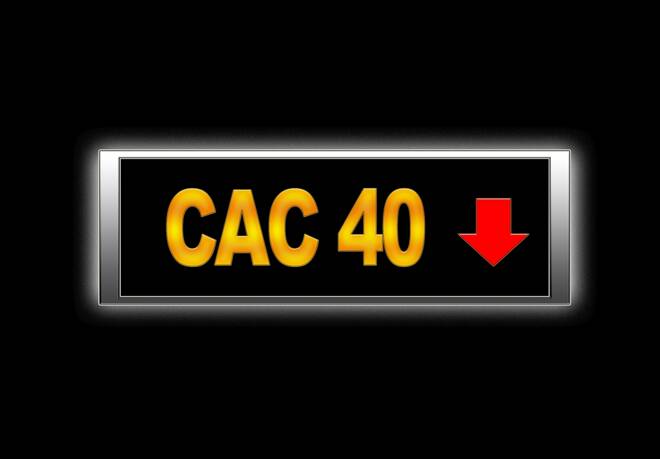Advertisement
Advertisement
European Equities: A Week in Review – 16/07/21
By:
Inflation, COVID, and disappointing economic data from China overshadowed central bank assurances of unwavering policy support.
The Majors
It was a bearish week for the majors in the week ending 16th July.
The CAC40 fell by 1.06%, with the DAX30 and the EuroStoxx600 ending the week down by 0.94% and by 0.64% respectively.
Concerns over the resilience of the economic recovery and the upward trend in consumer prices continued to weigh on the majors.
Economic data from China that included 2nd quarter GDP numbers added to the market angst late in the week.
Year-on-year, the Chinese economy expanded by 7.9%, which was down from 18.3% in the 1st quarter. Quarter-on-quarter, the economy expanded by 1.3%, which was up from 0.6% growth in the 1st quarter, however.
With concerns over the economic recovery weighing, a sharp upward trend in new COVID-19 cases also added pressure on the majors.
Economic data from the U.S and assurances of unwavering monetary policy support delivered some comfort in the week, however.
FED Chair Powell testimony and a shift in the ECB’s policy on price stability suggested an extended period of policy status quo.
The Stats
Industrial production and trade data for the Eurozone were in focus along with finalized inflation figures for June.
For the Eurozone, industrial production fell by 1.0%, reversing a 0.6% rise from April.
In June, the Eurozone’s trade surplus narrowed from €10.9bn to €7.5bn. Economists had forecast a widening to €16.4bn.
Following a shift in the ECB’s policy on price stability, however, the inflation figures had limited impact.
The Eurozone’s annual rate of inflation softened from 2.0% to 1.9%, falling below the ECB’s new 2% target rate.
The core annual rate of inflation softened from 1.0% to 0.9%.
From the U.S
Inflation figures weighed on riskier assets early in the week.
The annual rate of inflation accelerated from 5.0% to 5.4% in June, with the core annual rate of inflation picking up from 3.8% to 4.5%.
Wholesale inflationary pressures were also on the rise, with the producer price index increasing by 1.0% in June. In May, the index had risen by 0.7%.
In the 2nd half of the week, jobless claims, retail sales, and consumer sentiment were in focus.
It was a mixed set of numbers for the Dollar.
In the week ending 9th July, initial jobless claims fell from 386k to 360k.
Retail sales beat forecasts, with sales up 0.6% month-on-month. Economists had forecast a 0.5% decline following a 1.7% slide in May. Year-on-year, sales was up 18%, coming in ahead of a forecasted 14.0% increase. In May, retail sales had risen by 27.6% year-on-year.
While the jobless claims and retail sales figures were positive, consumer sentiment waned in July.
According to prelim figures, the Michigan Consumer Sentiment Index fell from 85.5 to 80.8. Economists had forecast a rise to 86.0.
Manufacturing sector data from Philly and NY State, industrial production, and business inventories were also out but had a muted impact on the markets.
On the monetary policy front, FED Chair Powell delivered 2 days of testimony to lawmakers. Powell talked of the FED’s willingness to let inflation run hotter in order to avoid the mistake of tightening policy too soon. The FED Chair’s assurances had limited impact, however.
The Market Movers
From the DAX, it was a bearish week for the auto sector. BMW and Volkswagen slid by 2.71% and by 2.56% respectively, with Continental falling by 2.30%. Daimler ended the week down by a more modest 1.57%.
It was also a bearish week for the banking sector. Deutsche Bank and Commerzbank saw losses of 3.98% and 4.03% respectively.
From the CAC, it was a bearish week for the banks. BNP Paribas fell by 2.06%, with Soc Gen and Credit Agricole sliding by 2.50% and by 2.88% respectively.
The French auto sector also struggled with Stellantis NV and Renault seeing particularly heavy losses of 4.85% and 7.55% respectively.
Air France-KLM and Airbus ended the week down by 3.96% and by 1.88% respectively.
On the VIX Index
It was a second consecutive weekly gain for the VIX. In the week ending 16th July, the VIX rose by 14.03%. Following a 7.37% gain from the previous week, the VIX ended the week at 18.45.
3-days in the green from 5 sessions, which included a 8.47% jump on Friday delivered the upside in the week.
For the week, the NASDAQ slid by 1.87%, with the Dow and the S&P500 ending the week down by 0.52% and by 0.97% respectively.
The Week Ahead
It’s a busy week ahead on the economic calendar.
Late in the week, business and consumer confidence figures will be in focus. With the ECB looking for consumption to fuel the economic recovery, the numbers will influence.
On Friday, prelim private sector PMIs for France, Germany, and the Eurozone will also be in focus.
The markets will be looking for any economic speed bumps following disappointing stats from Germany recently.
On the monetary policy front, the ECB is also in action on Thursday. With the policy revamp and some uncertainty over the economic outlook, it should be an interesting press conference…
From the U.S, jobless claims will draw plenty of attention on Friday.
At the end of the week, prelim private sector PMIs for July will also be in focus.
Expect the services PMI and the initial jobless claim figure to be the key numbers of the week.
Away from the economic calendar, corporate earnings will draw some attention.
Big names from the U.S include Netflix Inc. (Tues), Coca-Cola Co. (Wed), and Twitter Inc. (Thur).
To add to the plate, COVID-19 news will also need monitoring in the week.
About the Author
Bob Masonauthor
With over 28 years of experience in the financial industry, Bob has worked with various global rating agencies and multinational banks. Currently he is covering currencies, commodities, alternative asset classes and global equities, focusing mostly on European and Asian markets.
Advertisement
